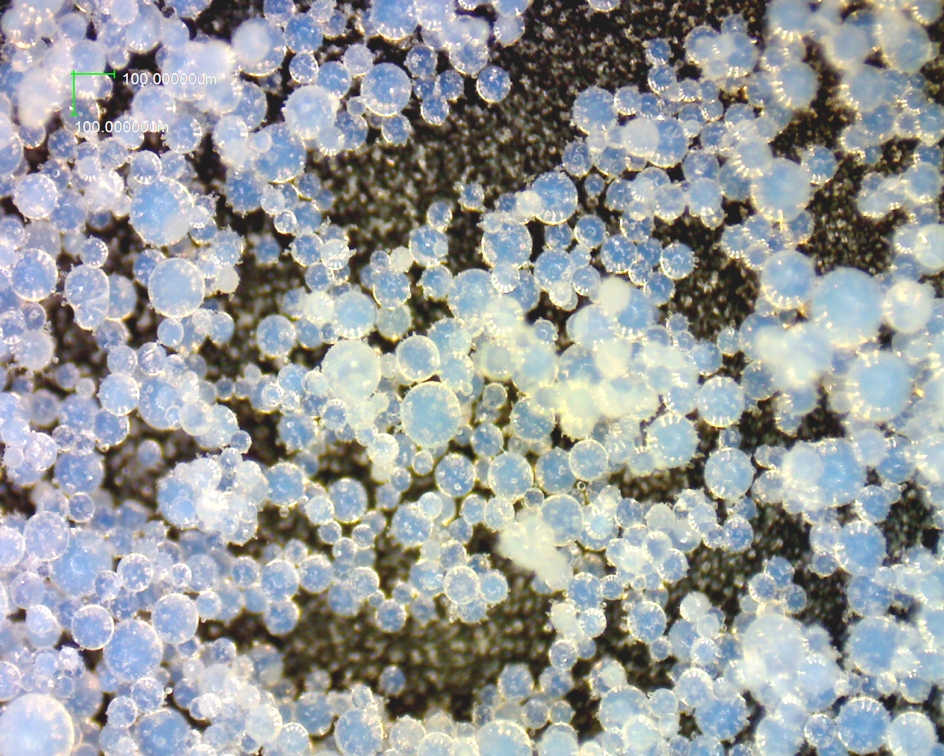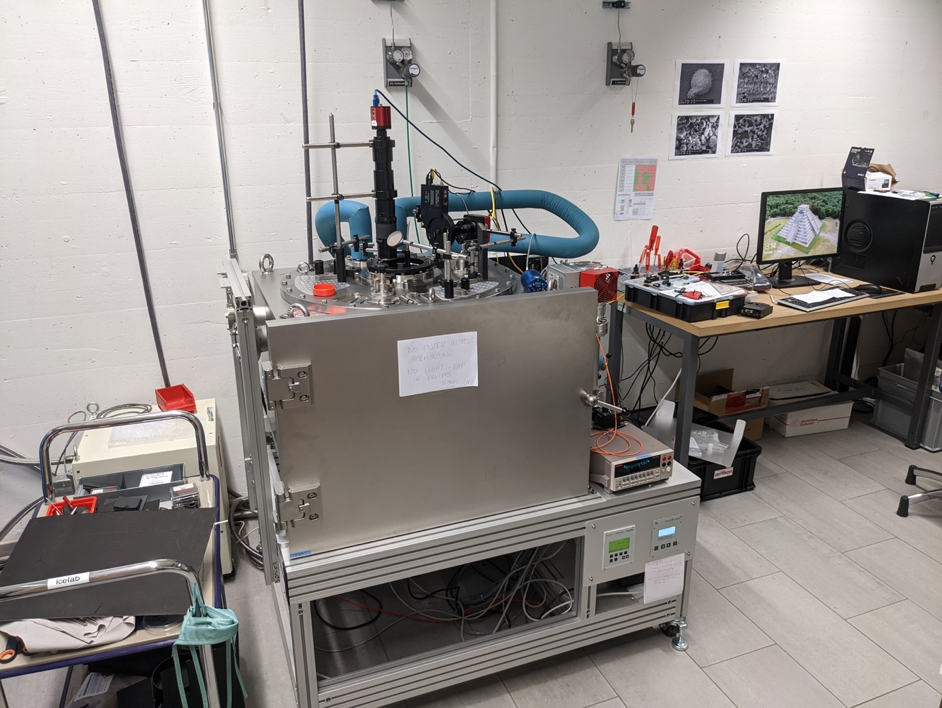Reflectance properties of analogues for small bodies and planetary surfaces. Overview of experimental characterizations at the University of Bern
- Universität Bern, Physikalisches Institut, Space Research and Planetary Sciences, Centre for Space and Habitability, NCCR PlanetS, Bern, Switzerland (antoine.pommerol@space.unibe.ch)
The planetary Ice Laboratory has been developed at the University of Bern to measure various reflectance properties of analogues for small bodies and planetary surfaces with a special focus on icy surfaces. Its core facilities are a set of devices to produce well-characterized and reproducible analogue samples and a set of instruments designed to measure the reflectance properties of the samples over different spectral ranges, different geometrical configurations, either in total light or sorted by polarisation state.
We use the laboratory to work on a range of scientific questions, mostly related to current Solar System missions and the interpretation of remote-sensing data but also occasionally on telescopic observations of Solar System objects as well as distant exoplanets and planet-forming circum-stellar discs. The experimental datasets collected are then provided to public databases for use by the community.
Some of our most recent investigations include:
- Visible and near-infrared reflectance spectra of analogues for the icy moons of the outer Solar System. We have collected new data with salty ice samples (Fig. 1), before and after irradiation by electrons, which can be compared with reflectance data measured by previous missions. The dataset will also help with the preparation of the JUICE and Europa Clipper missions.
- Simulations of cometary activity, in the framework of the CoPhyLab project led by TU Braunschweig, with IWF Graz, MPS and DLR as partners. We develop quantitative methods to derive the ice-to-dust ratio from reflectance data in order to study the sublimation of dust ice mixtures prepared as cometary analogues. The results help interpreting the data from previous missions such as Rosetta and preparing future missions such as Comet Interceptor.
- Spectral reflectance properties of different types of icy and dry Martian analogues, most notably in relation with the quantitative analysis of images returned by the CaSSIS imager of Exomars TGO. These measurements are performed in a simulation chamber equipped to simulate the Martian conditions of composition, temperature and pressure and we look at the samples with an imager equipped with the spare bandpass filters from CaSSIS (Fig. 2).
- The linear polarisation properties of pure and mixed minerals as analogues for the surfaces of asteroids with implications for the interpretation of measured phase curves in terms of composition. (see also Spadaccia et al., this conference).
- Assessment of the potential of circular spectropolarimetry as a biosignature in reflected light for Solar System objects and exoplanets.
- Measurements of artificial samples for comparison with numerical simulations.
With this presentation, we will provide an overview of the main objectives of the overall project, detail the methodology used, and present some of the results from the most recent studies mentioned here.

Fig. 1: Blueish salty (NaCl) ice particles (~67µm) produced after the freezing in LN2 of salty solutions. Particles freeze from the exterior to the interior, forming a thin mantle of pure crystalline ice around a core of amorphous hyper saline ice. After the LN2 has evaporated, ice and salt in the core slowly crystallize as the temperature increases, generating Rayleigh scattering.

Fig. 2: The SCITEAS-2 simulation chamber configured to simulate the cold surface and atmosphere at the Martian poles and equipped with a microscope and a multispectral imager with the spare bandpass filters from CaSSIS.
How to cite: Pommerol, A., Patty, L., Spadaccia, S., Affolter, L., Becerra, P., Capelo, H., Cerubini, R., Cesar, C., Drozhzhova, T., Feller, C., Kipfer, K., Stoeckli, L., Valantinas, A., Yoldi, Z., and Thomas, N.: Reflectance properties of analogues for small bodies and planetary surfaces. Overview of experimental characterizations at the University of Bern, Europlanet Science Congress 2022, Granada, Spain, 18–23 Sep 2022, EPSC2022-512, https://doi.org/10.5194/epsc2022-512, 2022.

